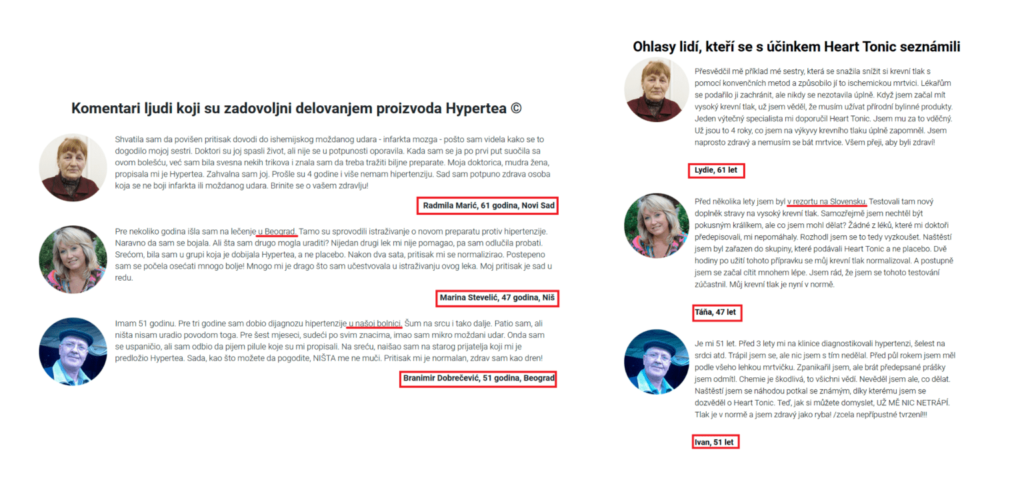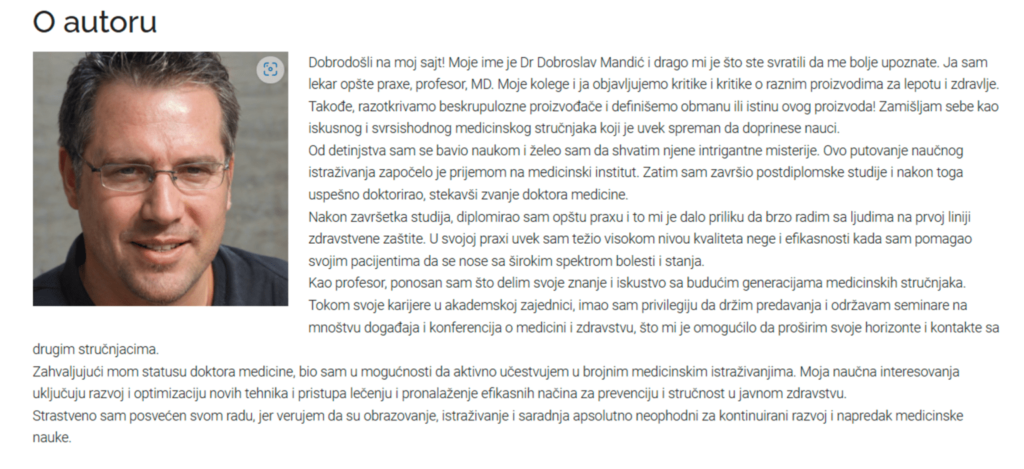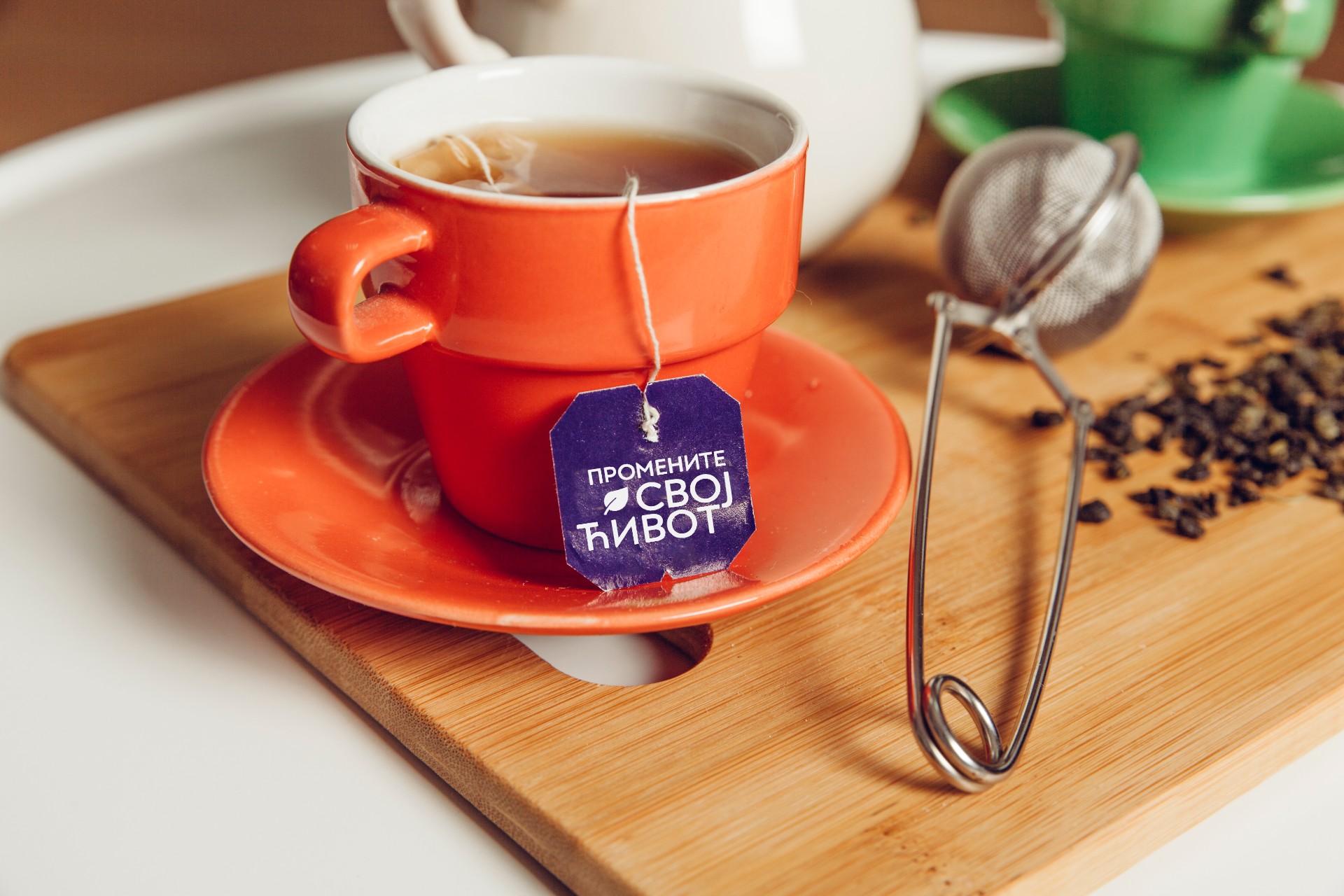Original article (in Serbian) was published on 13/10/2023; Author: Danijela Vujinović
The product Hypertea is presented on the cenacpa.rs website as a tea that is the miracle fix for hypertension, promising to directly target the root cause of the condition, alleviate its symptoms, and potentially prevent heart attacks and strokes. But hold on to your teacups, because a curious reader hit us up to fact-check this bold claim.
Upon initial inspection, the advertisement may appear convincing, resembling typical online promotions. It includes a comprehensive description and composition of the product, endorsements from purported experts, and testimonials from supposed satisfied users. However, upon closer examination, we uncovered several concerning discrepancies that call into question the credibility of the claims.
How to have a better l!fe
The content displays several grammatical and spelling errors, raising doubts about its authenticity. For instance, phrases like “You can look at him as a gift from God because it will help you to get rid of the disease, and to eliminate all the symptoms that come with her” and “It is time to change your l!fe and to improve the quality of your l!fe, and Hypertea is here as your faithful companion, to help you with that!” highlight these issues.
Although the ad states that the tea is available in limited quantities and at an extremely affordable price, with a discount of up to 50 percent, our investigation revealed discrepancies. The ordering page consistently shows a supposed limited stock of 18 new pieces upon each visit. However, prolonged exposure to the page leads to a decrease in the quantity displayed, to the final nine pieces. A simple page refresh appears to transform these initially limited supplies back into an unlimited quantity.
The website also emphasizes the exclusivity of the product, suggesting that it is not available for purchase in pharmacies or from any source other than the official Hypertea website. However, our search did not yield any conclusive evidence supporting the existence of such a website, only websites with dubious names and domains.
Milunka Savic raised from the dead
At the very bottom of the ad, there are inevitable comments from alleged satisfied users, with typical Serbian names. One of the alleged users bears the name of a renowned Serbian war hero who passed away in 1889, Milunka Savic. Another one of the alleged satisfied users, Marina Stevalic from Nis, claimed that she tested the tea and confirmed its effectiveness. Our investigation revealed that the image associated with Stevelic in fact corresponds to a 47-year-old English woman named Pamela Mason from Oxfordshire, England, as featured in an article published by the Daily Mail.

Further analysis of the images from the product’s order page uncovered the use of the same set of photographs featuring different identities on a similar Czech website. While the Czech site does not promote Hypertea, it advertises a product known as HearTTonic, purportedly a syrup for regulating blood pressure. The individuals featured on both sites, share similar stories, with their identities adapted to correspond with the appropriate language and country. And so Radmila becomes Lidija, Marina becomes Tanja, Branimir becomes Ivan.
Doctor Dobroslav
Lastly, the identity of the individual identified as Dr. Dobroslav Mandic, supposedly the owner/author of the cenacpa.rs domain, has come under scrutiny. According to the advertisement, Dr. Mandic is depicted as a general practitioner, professor, and doctor of medicine actively engaged in various medical research endeavors. However, our investigation into research paper databases failed to yield any results associated with an individual bearing that name.

Considering the suspicious nature of the associated photo, it is likely that it is a portrait generated using artificial intelligence. For a deeper understanding of identifying such deepfake images, please refer to this article by Tragac.



